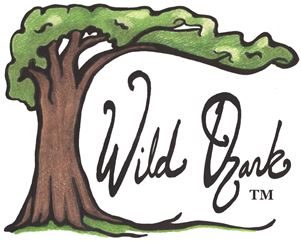Struggling to identify ginseng in the wild? Learn the difference between ginseng and the notorious ginseng look alikes with this guide.

Excerpt from the book:
GINSENG IS NOTORIOUSLY HARD to spot in the wild. I still have a little trouble finding the first plant each season, even if I know there’s one there because I planted it myself. But after spotting the first one, finding more is easier.
For those new to finding this plant there are a few plants that do a really good job of tricking the seeker into thinking they’re finders. They’re called the ginseng look alikes.
Take heart, though. Once you become adept at telling the difference between ginseng (Panax Quinquefolius) and the other plants that look like it, you’ll rarely make the mistake again. Eventually you’ll wonder how you ever confused them with ginseng in the first place.
Images and description
The following images and plant descriptions are of the most common look-alikes. There are other plants that some people find confusing, but this is the one I am most often asked about.


Virginia creeper is the single most mistaken plant. Therefore the longest chapter will focus on that one.
In an Ideal World
Ideally you’ll have examples of both plants in real life to look at. If you are able to travel to northwest Arkansas there are labeled plants at Compton Gardens in Bentonville and The Ozark Folk Center in Mountainview. Here at Wild Ozark in Kingston, I have a Ginseng Habitat Garden with plant markers to help people learn the differences plus I’m there to point them out in person.
Perhaps there is a botanical garden in your area or maybe you can find someone who knows the plants and will take you out to the woods to show you some examples.
Short of that, it is my hope that seeing the photos in this book will help you. As an added value, you are welcome to send me photos of your suspects and I’ll let you know if what you’ve found is ginseng or a notorious look-alike. My email address is in the back.
Mostly Pictures
This is a visual guide and less so an identification key. It is not intended to help you identify certain plants, per se, but to help you learn what is NOT ginseng and WHY it is not ginseng.
Where to buy?
You can get the book from various retailers . Or you can get the PDF from me and print whatever part of it you want at home:
[product sku=”book-002b”]

Pingback: How to Find Ginseng? First look for the right habitat. | Wild Ozark
i think i found ginseng plants my ? is there any other plant root look like the root on ginseng I livein the middle of mn and also only found very few plants about 7or 8 there are hunter leasing this land do you think they beat me to it and raped the ginseng thanks for your reply very much
Hi Eugene, there’s a lot of plants that look like ginseng, but the roots are pretty unique. If you want to send me pics of the roots you can. I would imagine if there are hunters using that land they’ve probably noticed the ginseng. My email addy is .
I found what i think is ginseng in coastal nc. leaves stalk berries and root all look to be correct but when i scraped a bit of the root back and touched it to my tongue it burned/sting anywhere it contacted. now all these are signs of a poisonous plant so i immediately spit it out and washed my mouth out. do you have any idea what it could have been?
You’ve probably tasted Jack-in-the-Pulpit (Arisaema triphyllum). It was actually a food source for native Americans, hence one of the common names: ‘Indian Turnip’. However, it has to be thoroughly boiled (with changes of water) and dried to get rid of the oxalic acid and asparagines that causes the burning/stinging. It is toxic without that treatment. You could have also tasted the root of its cousin the Green Dragon (A. dracontium). Without seeing the leaves it’s hard to tell the difference. But the berries and stalk on the ginseng do look different than those once you’ve been able to see them and compare the difference. Usually, there are still leaves on my ginseng while the berries are red, too, although this year the deer ate some of the leaves leaving only berry stalks. But the stem and cluster of the ginseng are different – the stem is thinner and the berries are in a round configuration on the stem, whereas the Arisaema species stems are a little thicker and the berries are arranged in a more conical shape. Both are the same bright red. I’ll go down to see if the berries are red on the plant with no leaves and try to get a good pic of it to post here. I’ll email it to you, as well, if I do.